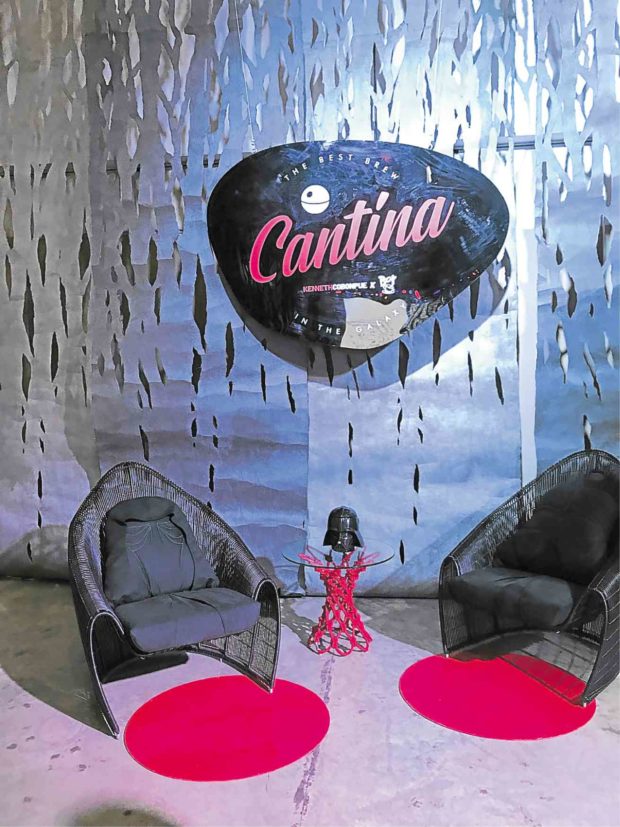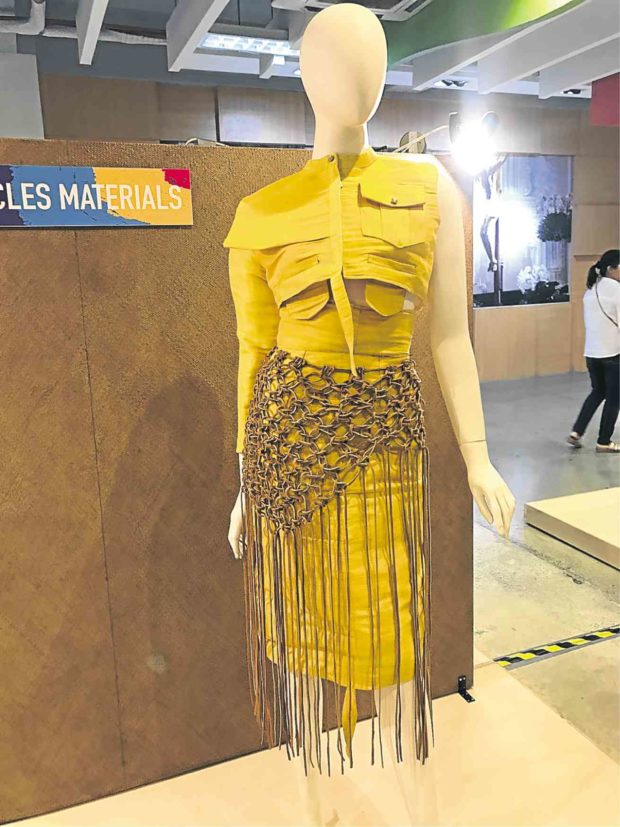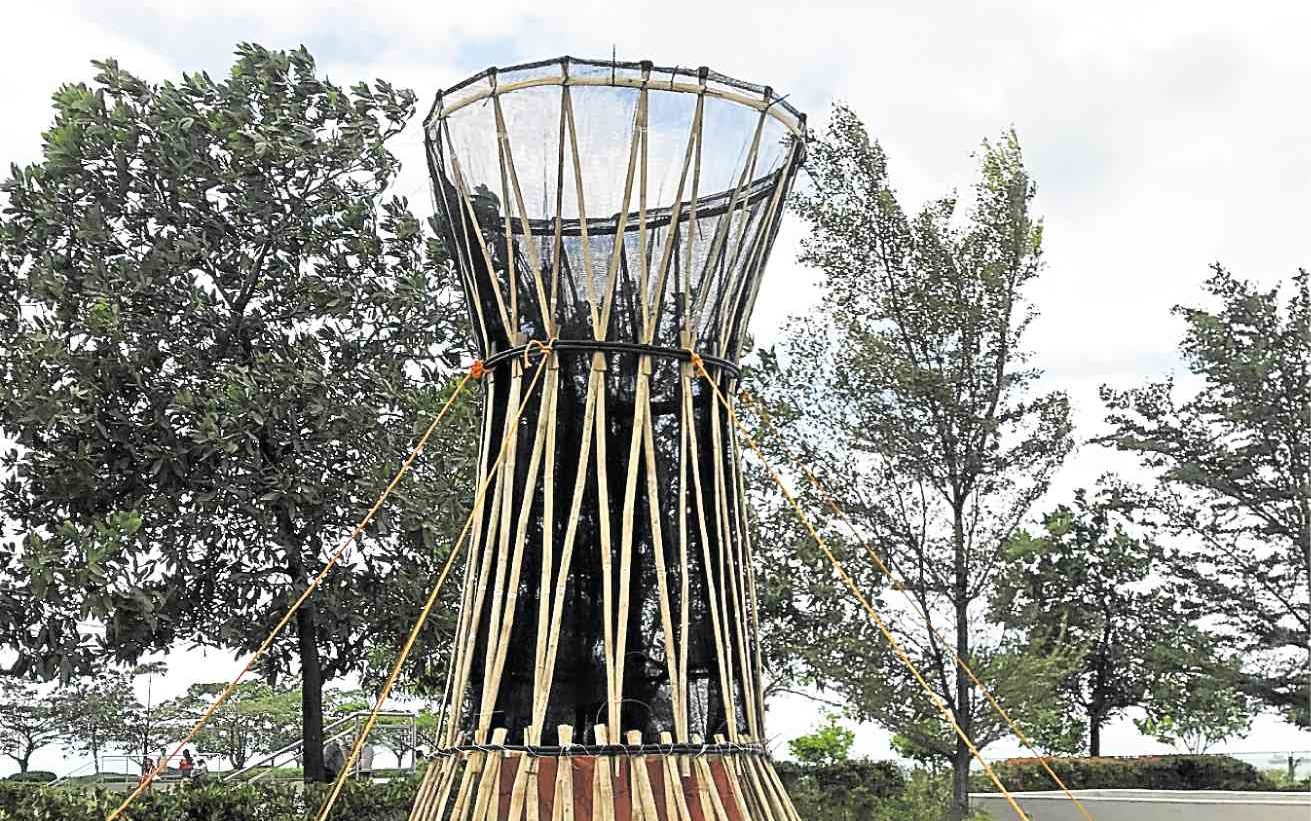
Unlike other trade fairs that highlight coming trends, the recent Cebu Design Week (CDW) celebrated the province’s creative economy. The bazaar-like layout at the IC3 Convention Center served as a business platform for a diverse range of exhibitors: the startups and the old guard, the pacesetters and traditionalists, the academe and entrepreneurs.
CDW, organized by the Cebu Furniture Industries Foundation (CFIF), emphasized the importance of sustainability. Interpretations of such sustainability were diverse—ranging from indigenous embroidery, weaving and carvings made of organic materials presented by the neighboring islands, to cosplayer costumes made from recycled upholstery scraps.
Ma. Luisa Aboitiz Booth, CDW chair and executive vice-president of Mehitabel, said that the premise of Cebu Design Week is to find new ways to be relevant to the market and to show Cebu’s design capabilities to the world.
Where they once sold exclusively to the foreign market, manufacturers now use CDW as a venue to promote their products to the local market at affordable prices. Their main goal, though, is to nurture the creativity of the young people.
“We collaborated with the cosplayers who manipulated our excess leather,” said Booth. “The discarded hardware became embellishments. They created a look that could be found only in the Philippines. We also gave upholstery and scraps to the cosplayers, which they sewed into Renaissance clothing. These cosplayers wear them as costumes,” said Booth.
The Maker’s Market at the entrance of the hall featured crafts businesses of students and amateurs: handmade soaps, graphic designs, jewelry, T-shirt printing and animation services from Fabrication Laboratory from the University of the Philippines.
“They are in the company of experts who draw the crowds. They get the exposure,” said Lorenzana Boquiren, exporter and CDW marketing chairperson. These experts included world-class designer Kenneth Cobonpue, who styled the Cantina Café with his Star Wars Collection, a co-branded project with Walt Disney, owner of the movie franchise.
Designer Vito Selma’s booth of lighting fixtures made of modular wooden pyramids, pine veneer and mesh orbs mimicked the cosmos.

The Embassy of Sweden’s exhibit, “Fashion Revolution: The Future of Textiles,” highlighted the country’s role in transforming fashion from a pollutant industry into an eco-friendly one. On display were H&M clothes spun from recycled plastic bottles, orange fibers and organic linens and the clothes of Swedish-trained socio-entrepreneur Anya Lim, whose Anthill label produces fabrics from scraps.
Collaboration
CDW drove home the point of sustainability with a collaborative exhibit between established exporters and young creatives who repurposed the formers’ manufacturing remnants.
The National Clean-Up Coalition Philippines sent discarded tarpaulins to the recycling company Terra Enterprises. The latter’s partner sewing community upcycled them into tote bags.
The Fashion Institute of Design and Arts (FIDA) held a show featuring garments from the leftover furniture materials of export companies Castilex, Jamaica Markets and Vasacrafts.
The fashion students also designed a dress stitched with discarded Havaianas slipper thongs and soles. It came across as an artwork rather than something one could wear.
The collaboration between ArchCon (Animé, Role-Playing Games, Comics, and Hobbies Convention) and prominent furniture company Mehitabel produced delightfully quirky results. The cosplayers group transformed Mehitabel’s scrap leather into pouches and purses with excess hardware as accents. The castaway woods and rubber sheets were made into a Wonder Woman bustier.

At the Mehitabel booth, furniture parts from discontinued pieces were made into an attractive divider instead of ending up in the landfill.
Enduring style
CDW also celebrated Cebu’s natural resources that had long attracted foreign investors. Italian designer Carlo Cordaro’s Atelier-A presented his classic styles like the 20-year-old minimalist Tropea collection made of bamboo.
“Simplicity is the highest form of sophistication. The design and technology of this style is sustainable,” Cordaro said.
Meanwhile, SM Seaside’s participation in CDW was to hold a water conservation workshop and display a bamboo water collector, made in partnership with the Department of Science and Technology and a multi-disciplinary space, Matic Hub.
Architect and environmentalist Joy Onazawa designed the bamboo water tower at the mall’s Sky Park. The installation was a proposal to address water shortage in Cebu and around the country.

“We built it to inspire villages around the Philippines that lack potable water. We chose bamboo because it is abundant,” Onazawa said.
She said design should begin from the surroundings. “Responsible development means to identify your ecosystem and see what it can do for you and what materials you can get from it. Instead of designing and looking for materials outside, look at what’s around you.”—CONTRIBUTED














































